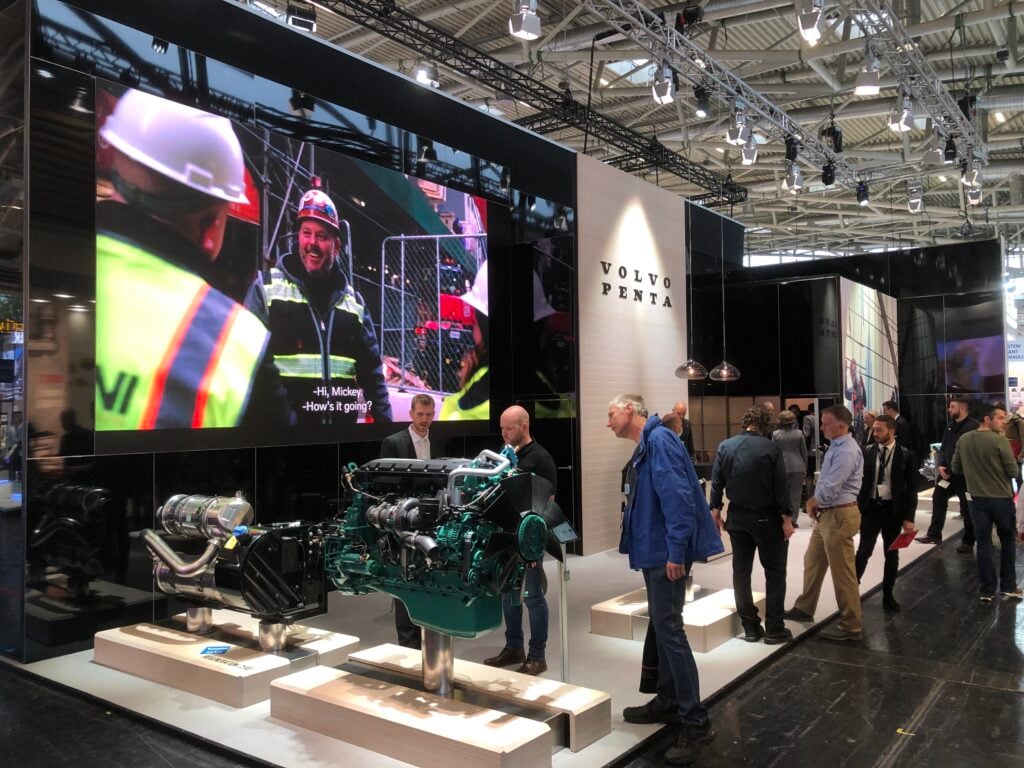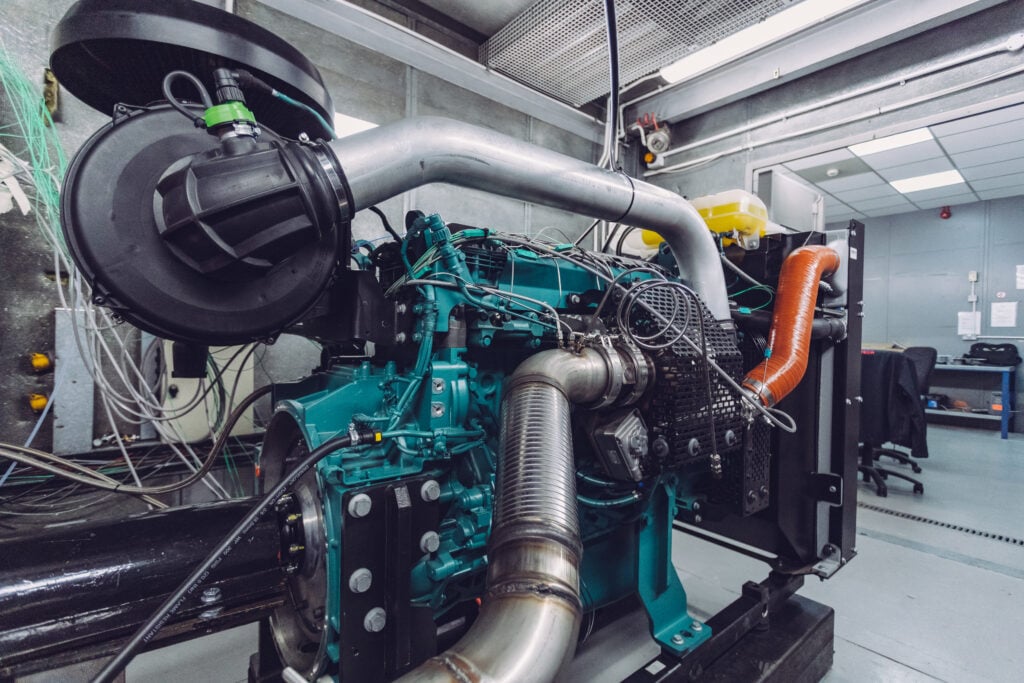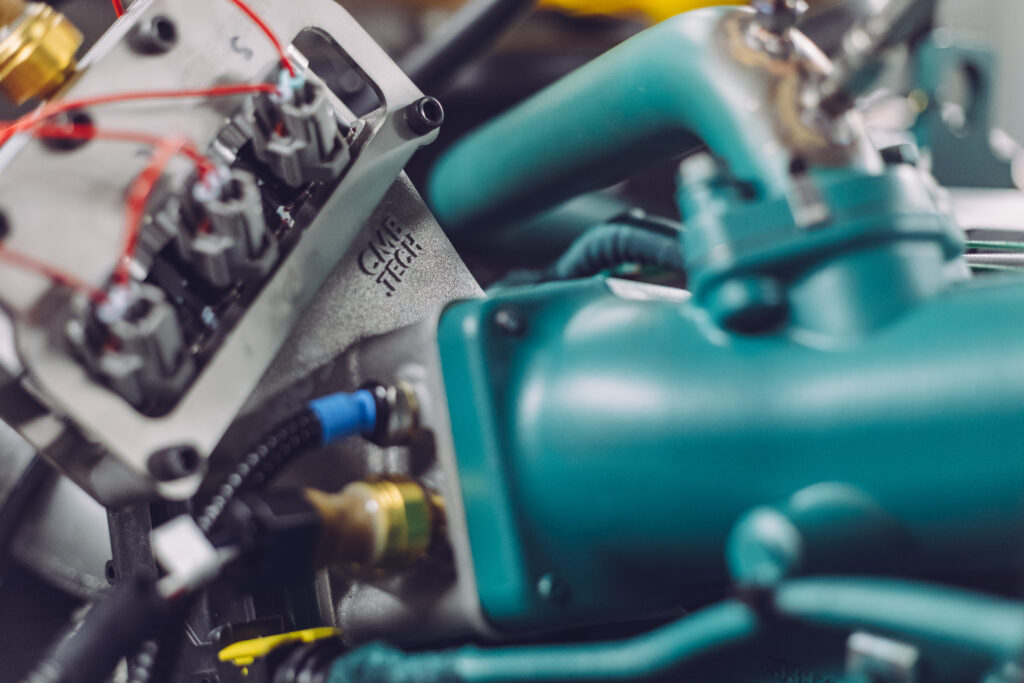Volvo Penta has revealed its dual-fuel hydrogen engine at bauma Munich as part of its transformation journey into new, sustainable technologies. Volvo Penta has taken another step on its journey towards creating a sustainable industrial future with the unveiling of its dual-fuel hydrogen engine at bauma Munich. By using hydrogen as a renewable fuel source, the engine – which is an evolution of the company’s proven D8 model – will reduce CO2 emissions by up to 80%, without impacting power or performance.

The engine operates in a similar way as the conventional D8 model, but uses mainly hydrogen instead of diesel. If hydrogen is not available, the engine can continue to run on traditional fuel, safeguarding productivity and uptime. This means that with dual fuel technology, assets and business operations can be future-proofed – despite the fact we don’t have full coverage from a reliable hydrogen infrastructure in place today.
“The new Volvo Penta dual-fuel hydrogen engine offers customers a low-carbon interim solution before suitable zero-emissions alternatives become viable. It delivers the same power and torque curve as a regular diesel engine but with significantly lower CO2 emissions. The technology is relatively simple and can be installed with minimal disruption, so we see this as being a cost-effective and robust solution for customers in a variety of applications – including construction and mining – who are looking to transition to net-zero emissions.”
explains Anders Wernersson, Product Manager for the dual-fuel hydrogen engine.
Transformational partnerships
Volvo Penta has partnered with CMB.TECH to develop the dual-fuel hydrogen-powered solution. CMB.TECH provides and trials the hydrogen add-on kit and tank system that works together with the Volvo Penta D8 engine and software. Currently, the engines are being run in test cells to optimize the hydrogen-diesel injection strategy for maximum reliability and emissions savings.

The first engines will be working in end-customers machines in Europe in 2023 as part of a market pilot project, which will be followed by small-scale production. It will be a stepwise introduction based on market and customer demand and there will be a focus on the fit between the technology and customer needs, ensuring it makes sense to choose a dual-fuel powertrain.
“Collaboration and partnerships are essential to facilitate the transformation towards more sustainable power solutions,” says Anders. “This close partnership approach is a cornerstone of Volvo Penta’s long-term decarbonization and business strategy. We work closely with our customers and partners to create tailored solutions based on their requirements. As part of the Volvo Group, we are in a unique position in that we can leverage proven technology and competence from Volvo Trucks, Volvo Buses and Volvo Construction Equipment. We combine this with our customer, market and application knowledge, allowing us to optimize and adapt our designs for a specific vehicle, considering the duty cycles, climate and environment it will operate in.”

A fossil-free fuel source
The new, eight-litre model has been designed to reduce emissions by using a renewable, fossil-free fuel source, therefore it is recommended that customers will use Green Hydrogen to power their equipment. Green Hydrogen is a renewable energy, created by the electrolysis of water using sources such as solar, wind and water power in order to create a fully-carbon neutral hydrogen production cycle.
The new, dual-fuel hydrogen-powered solution will help Volvo Penta on its way to reaching its ambitious commitment to the Science Based Targets initiative (SBTi), where the company aims to reach net-zero value chain emissions by 2040.


 Copyright 2017-2025 All rights reserved.
Copyright 2017-2025 All rights reserved.